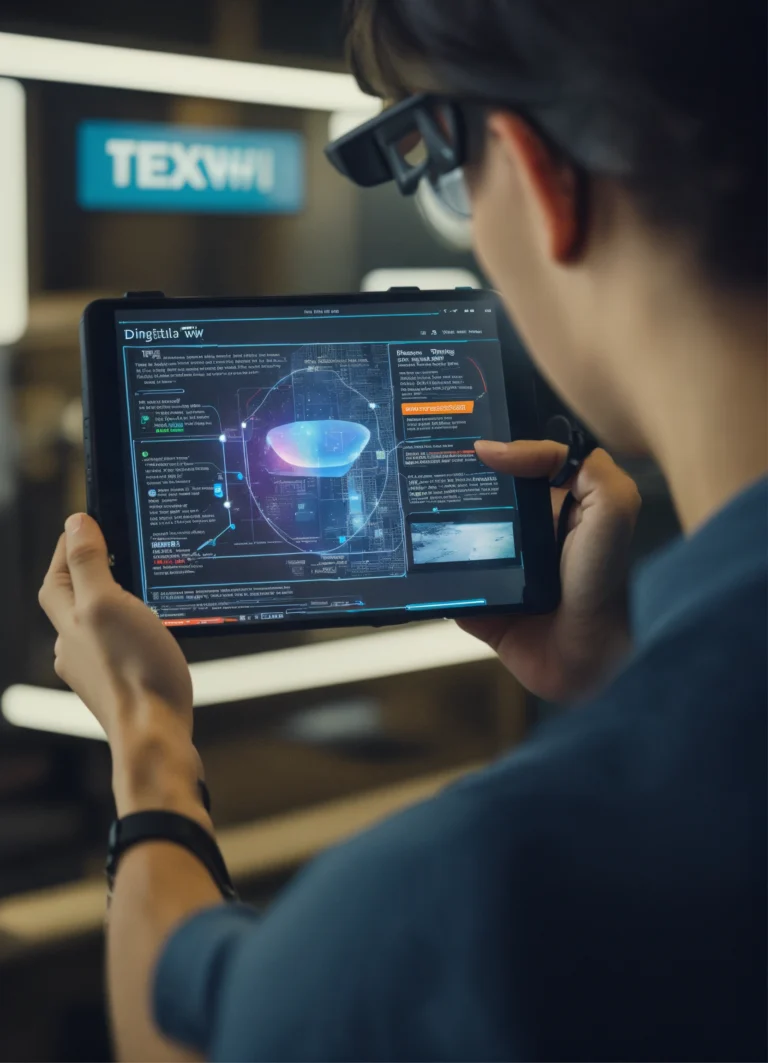M2M (Machine-to-Machine) solutions have emerged as a transformative force in supply chain management, enabling you to streamline operations and enhance efficiency. By leveraging real-time data exchange between devices, you can optimize inventory levels, improve demand forecasting, and reduce operational costs. Implementing these technologies not only increases your competitive edge but also minimizes risks associated with disruptions and delays. Embracing M2M solutions allows you to make informed decisions swiftly, ultimately leading to greater customer satisfaction and increased profitability.
Understanding M2M Solutions
Definition of M2M (Machine to Machine)
As you research into the world of supply chain management, it’s important to grasp the concept of M2M, or Machine to Machine. This term refers to direct communication between devices, enabling them to exchange data and perform tasks without human intervention. By utilizing M2M technology, businesses can streamline their operations and enhance efficiency significantly.
Key Technologies in M2M Solutions
Solutions in M2M are built on various cutting-edge technologies that enable seamless connectivity and data exchange. These technologies include cellular networks, Internet of Things (IoT) frameworks, and Bluetooth, which all contribute to creating a robust M2M ecosystem. Devices connected through these technologies can monitor, control, and optimize supply chain operations effectively.
The integration of these technologies allows for real-time monitoring and data collection, which you can leverage to make informed decisions. With IoT frameworks, smart sensors, and advanced analytics, M2M solutions provide a comprehensive view of your supply chain processes, giving you the ability to respond to challenges swiftly and accurately.
Benefits of M2M in Supply Chain Management
On exploring the benefits of M2M in supply chain management, you will discover how it significantly enhances efficiency and reduces operational costs. With real-time data exchange, you can improve decision-making, predict demand, and optimize inventory management.
This technology not only helps you minimize waste and streamline processes but also fosters collaboration and accountability across your supply chain. By having instantaneous access to crucial information, you can anticipate disruptions, enhance customer satisfaction, and ultimately drive your business’s success in a competitive market.
M2M Application Areas in Supply Chain
Now, let’s explore the various M2M application areas that can significantly enhance your supply chain efficiency.
Inventory Management
Application of M2M technology in inventory management allows for real-time tracking and monitoring of stock levels. You can automate replenishment processes, ensuring that the right quantities are available when you need them, ultimately reducing excess inventory costs and minimizing stockouts.
Transportation Management
Management of your transportation systems is crucial for optimizing logistics and distribution. By employing M2M solutions, you can enhance route planning, improve delivery timelines, and manage fuel consumption effectively.
Understanding the importance of M2M in transportation management can lead to better decision-making processes. With real-time data, you can monitor vehicle conditions and traffic patterns, allowing you to react swiftly to disruptions and improve delivery efficiency while minimizing operational costs.
Asset Tracking and Monitoring
An effective M2M solution for asset tracking and monitoring enables you to keep tabs on your critical equipment and assets throughout the supply chain. This ensures you can minimize losses and maintain operational continuity.
For instance, utilizing GPS tracking and IoT sensors allows you to receive real-time updates on the location and condition of your assets. This means you can quickly identify potential issues such as theft or equipment malfunction, alerting you to take appropriate actions before they escalate into significant problems.
Demand Forecasting
Management of demand forecasting becomes much more precise with M2M tools. These technologies analyze large volumes of data, which allows you to predict consumer demand trends effectively.
Transportation of goods can be optimized through accurate demand forecasting. By analyzing patterns in purchasing behavior, M2M solutions help you adjust your inventory and logistics strategies in real-time, ensuring that you meet customer demands without incurring unnecessary costs.
Challenges of Implementing M2M Solutions
Keep in mind that while M2M solutions can significantly enhance supply chain management, there are several challenges you may face during implementation.
Integration with Existing Systems
On your path to adopting M2M solutions, integrating with existing systems can pose a significant challenge. Legacy systems may not easily communicate with newer technologies, leading to disruptions and inefficiencies. You will need to assess the compatibility of your current infrastructure with M2M tools to ensure a seamless integration process.
Data Security and Privacy Concerns
Implementing M2M solutions also raises data security and privacy concerns. As sensitive information is transmitted between devices, the risk of unauthorized access increases. You must prioritize safeguarding your data and comply with regulations to protect your organization and customers.
A significant aspect of data security is ensuring that all communication channels are encrypted and that strict access controls are established. Regular assessments of your security measures can help mitigate potential risks. Additionally, investing in comprehensive training for your team on best practices in data handling is crucial to maintain high standards of privacy and security.
Cost Considerations
Cost should be a critical factor in your decision-making process. Implementing M2M solutions involves not only upfront investments in technology and infrastructure but also ongoing maintenance and operational expenses. You need to carefully evaluate all associated costs to ensure long-term sustainability.
Understanding the Total Cost of Ownership (TCO) associated with M2M solutions is vital to avoid unexpected financial burdens. This includes considering costs related to integration, security, and training. By conducting a thorough cost-benefit analysis, you can better gauge the value of M2M solutions in enhancing your supply chain efficiency while keeping expenses in check.
Future of M2M in Supply Chain Management
For businesses today, the advent of Machine-to-Machine (M2M) communication is revolutionizing supply chain management like never before. As you look ahead, it’s critical to understand how M2M solutions can reshape the future of your operations, driving efficiency and enhancing visibility throughout the supply chain.
One of the most significant advantages of M2M technology is its ability to provide real-time data. With connected devices and sensors integrated into your supply chain, you can monitor everything from inventory levels to equipment functionality. This access to real-time information allows you to make informed decisions quickly, reducing delays and preventing bottlenecks that can hinder your operations.
As you embrace M2M solutions, keep in mind the potential for increased automation. Automation not only streamlines processes but also minimizes human errors, ultimately leading to greater productivity. Implementing M2M systems can result in lower operational costs, as automated processes often require less manual oversight and free up your workforce to focus on more strategic tasks.
However, the future isn’t without its challenges. As you adopt M2M technologies, you must be aware of the potential for cybersecurity threats. The more devices that are connected, the greater the risk of unauthorized access and data breaches. It’s crucial to invest in robust security measures to protect your supply chain and maintain customer trust.
On the positive side, the integration of M2M in your supply chain can vastly improve your customer service and satisfaction. With real-time monitoring and predictive analytics, you can offer customers accurate delivery dates and updates, enhancing the overall experience. This responsiveness builds loyalty and can distinguish you from competitors who may not leverage these technologies.
In the future, you can expect M2M solutions to become even more sophisticated with the progression of technologies such as artificial intelligence and machine learning. These advancements will allow for better data interpretation and more predictive capabilities, enabling you to anticipate issues before they arise and optimize your supply chain proactively.
To summarize, as you explore the future of M2M in supply chain management, you have the opportunity to harness powerful tools that can drive efficiency, transparency, and customer satisfaction. By focusing on innovative solutions while remaining vigilant about potential risks, you can position your business for long-term success in an increasingly connected world.
Q: What are M2M solutions and how do they enhance supply chain management?
A: M2M, or machine-to-machine communication, refers to technologies that allow devices to communicate and share data with each other without human intervention. In supply chain management, M2M solutions enhance efficiency by enabling real-time monitoring and tracking of goods, automating inventory management, and improving decision-making through data analytics. These solutions help companies identify bottlenecks, optimize logistics, and ultimately enhance the overall flow of goods from manufacturers to consumers.
Q: What specific benefits can companies expect from implementing M2M solutions in their supply chain?
A: Companies implementing M2M solutions can experience several key benefits, including:
1. Improved visibility and tracking of inventory and shipments, leading to better accuracy in order fulfillment.
2. Enhanced operational efficiency through automation of data collection and reporting processes, which reduces manual errors and saves time.
3. Real-time alerts and notifications regarding potential disruptions or delays, enabling proactive responses and contingency planning.
4. Better demand forecasting and inventory management, reducing excess stock and minimizing waste.
5. Cost savings over time due to improved resource allocation and reduced operational inefficiencies.
Q: Are there any challenges to adopting M2M solutions in supply chain management?
A: Yes, while M2M solutions offer many advantages, there are also challenges to consider:
1. Integration Complexity: Integrating M2M technologies with existing systems and processes can be complex and may require significant upfront investment.
2. Data Security: The increased connectivity between devices raises potential security risks, necessitating robust security measures to protect sensitive information.
3. Technical Expertise: Companies may need to develop or acquire new technical skills to effectively manage and maintain M2M solutions.
4. Initial Costs: While M2M can lead to cost savings in the long run, the initial setup and investment in devices and infrastructure can be a barrier for some organizations.
By addressing these challenges through careful planning and strategy, businesses can successfully harness the power of M2M solutions to optimize their supply chain operations.




